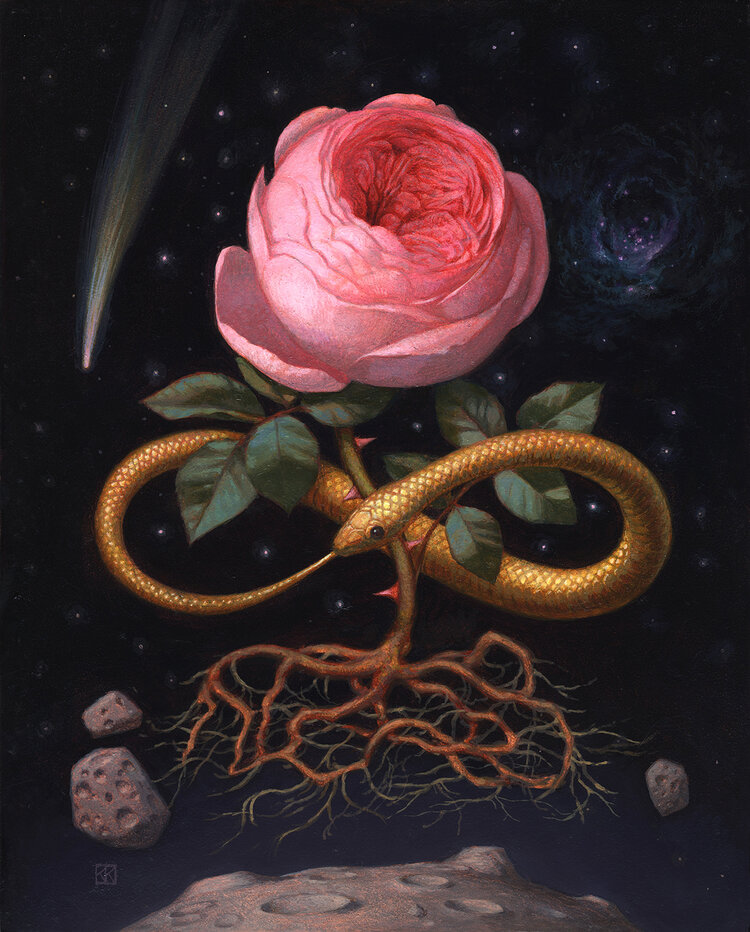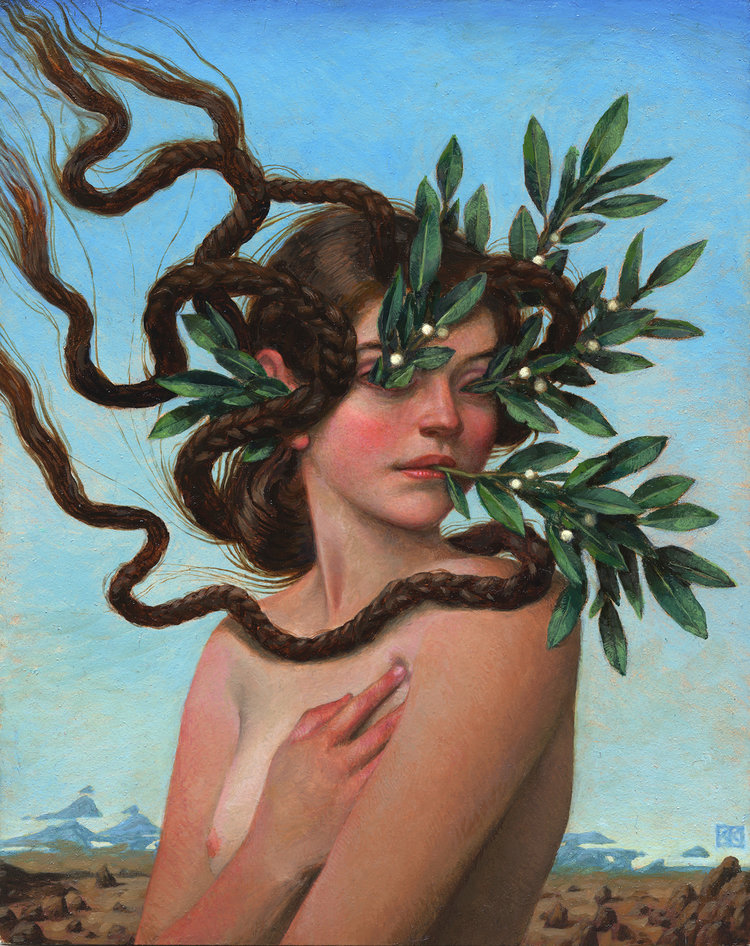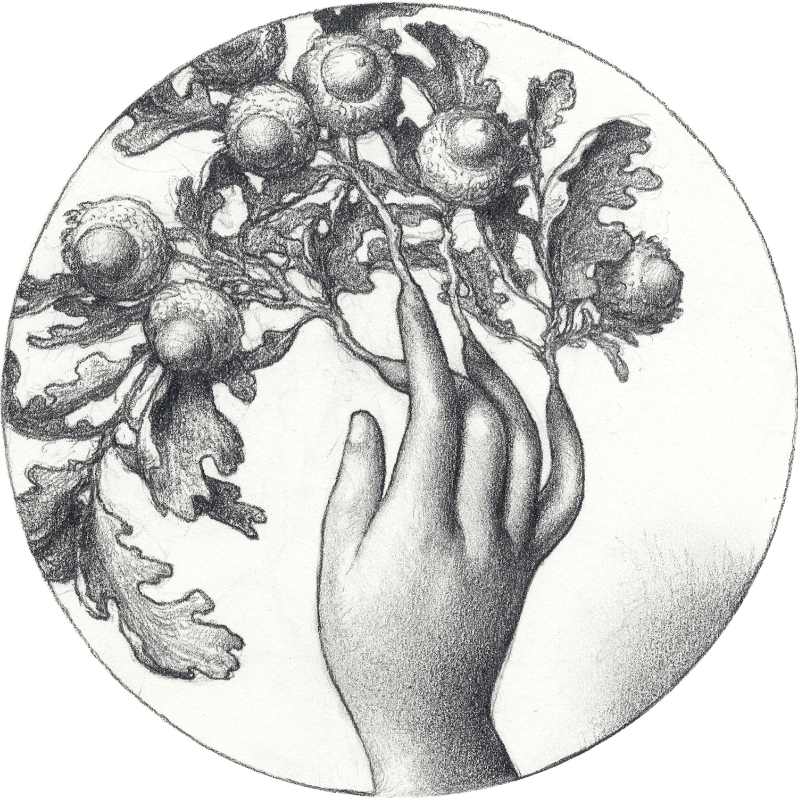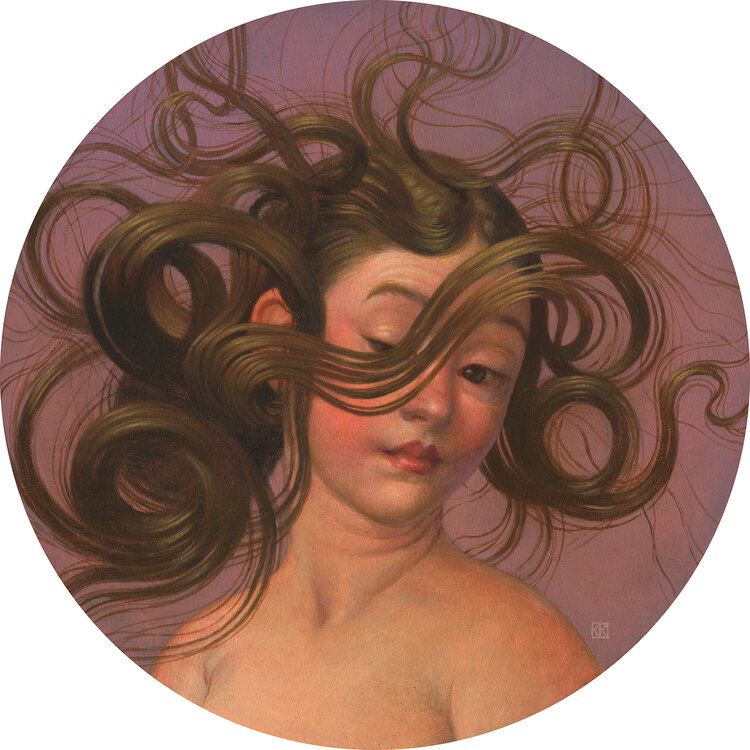b
The Carnivorous Rose: Art by Kristin Kwan
Kristin Kwan’s realistic, sweet, and melancholy paintings explore themes of life, death, and rebirth through the prism of mythology and lore. Her work, characterized by gorgeous flowers, alien landscapes, animals pierced by flora, and maidens surrounded by serpentine swirls of hair, has elements of surrealism and fantasy, allegory and whimsy, and is sometimes reminiscent of historical portraiture and Madonna paintings. She has a solo exhibition currently showing at the Nucleus Gallery in Portland through October 4th.



